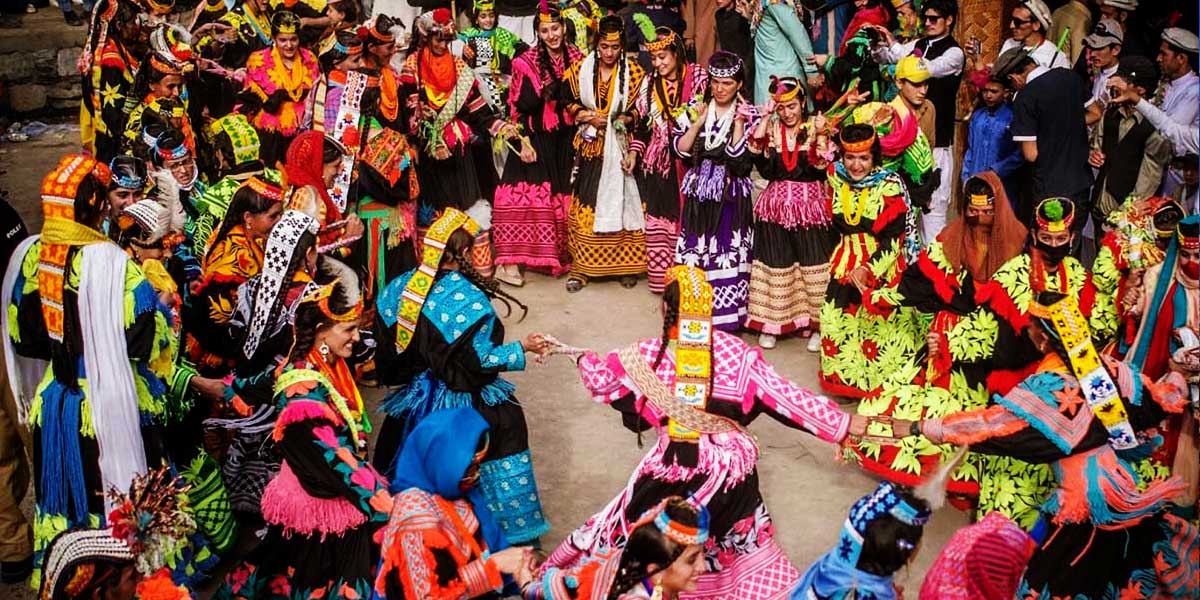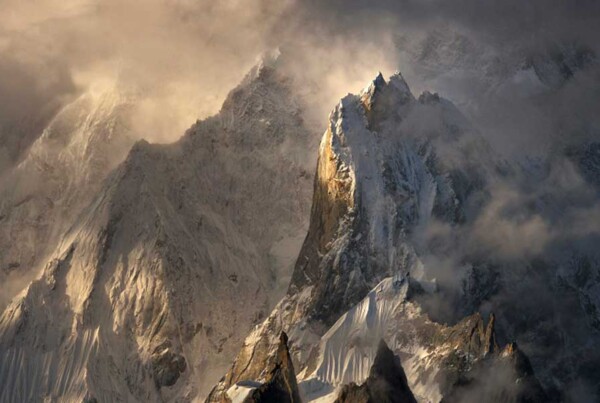Chitral is an area of outstanding natural beauty, boasting spectacular mountains that offer endless opportunities for culture, trekking, and climbing.
Festivals include:
Chilam Joshi is also known as Kalash spring festival. The Kalash people celebrate this four-day festival across all three Kalash valleys of Rumbur, Bumburet, and Birir. A large number of domestic and foreign tourists attend the Chilam Joshi festival every year.
Uchal, also known as Utchal is a summer Kalash festival. Kalasha people during this festival pay homage to God by celebrating the harvest and also thanking their God for blessing them with good food and crops. Corn, buttermilk and cheese are prepared to celebrate the festival.
Choimus begins on the winter solstice and holds great importance among the Kalasha people. Choimus, also known as Chitirmas, Chaumos is a winter Kalash festival. The annually observed event symbolizes and forecasts prosperity of the village and its people in the coming year. The locals perform rituals for purification during the festival at the dawn of the new year.
Chitral is also home to a fascinating variety of people, including the non-Muslim Kalash and the semi-nomadic Wakhi. As in Hunza, the people of upper Chitral are Ismaili Muslims and much more open in their outlook.
The Kalash numbering approximately 4500 is the smallest group amongst the religious minorities of Pakistan. Unlike the other minorities, they live exclusively in a particular geographical area; the three valleys of Birir, Rumbur, and Bumburet situated in Hindukush between the Afghan border and Chitral Valley, the people called this area Kafiristan. Until 1896 Kafirstan also included present-day Nuristan in Afghanistan, inhabited by the red Kafirs, whereas the Kalash were called “Black Kafirs”.
The origin and early history of the Kalash’s popular theory is that they are descendants of one Shalak Shaw, a General in the invading army of Alexander the great. Another theory is that the Kalash Originated from Tsiyane a country in the Tibetan belt. They shifted to Afghanistan in the early Christian era. Mahmood of Ghazni pushed them into the narrow valley of Hindu Kush in the 10th century. Until the second half of 14th century the Kalash were dominant throughout the southern Chitral. There were finally subdued by the Rais a ruling family of Chitral by the end of 14th century.





